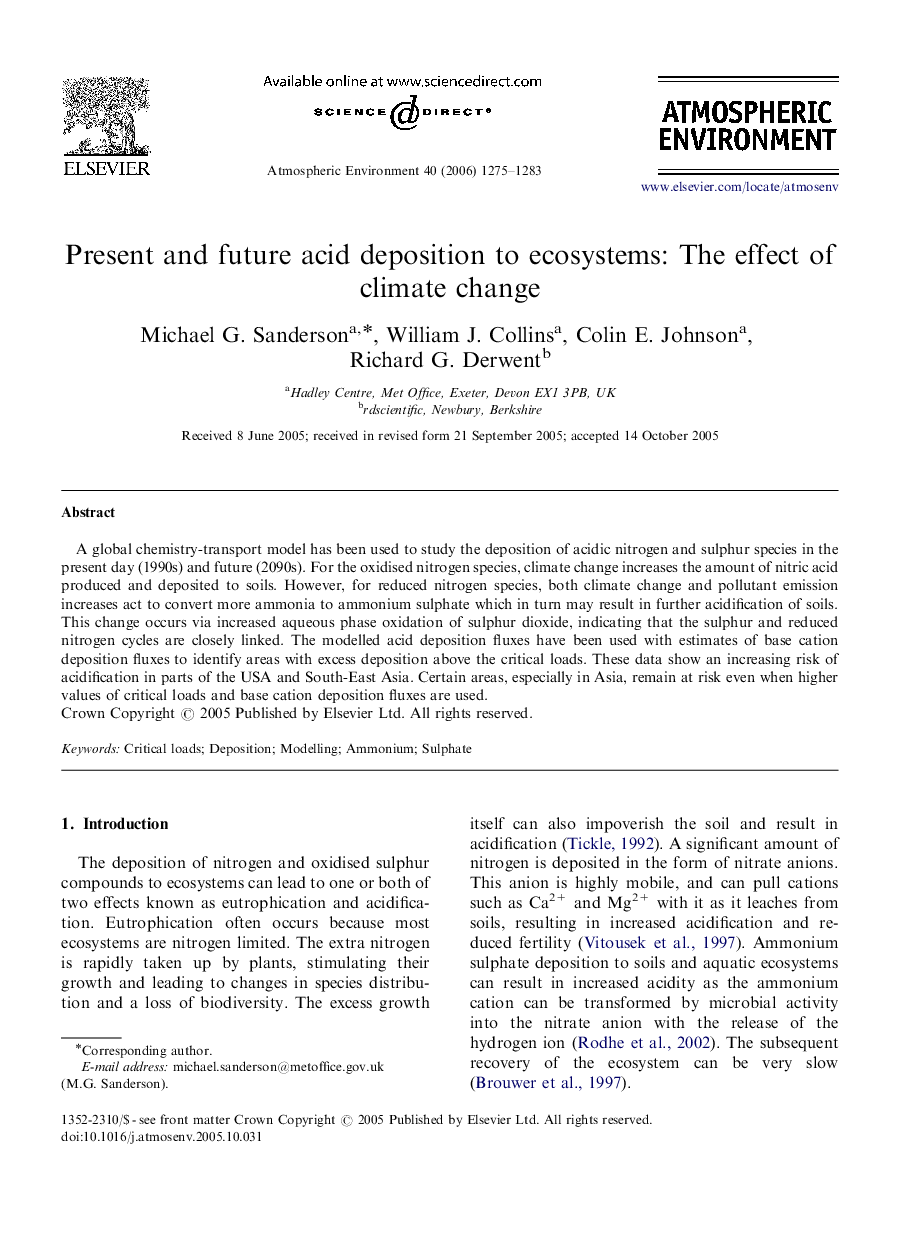| Article ID | Journal | Published Year | Pages | File Type |
|---|---|---|---|---|
| 4444809 | Atmospheric Environment | 2006 | 9 Pages |
A global chemistry-transport model has been used to study the deposition of acidic nitrogen and sulphur species in the present day (1990s) and future (2090s). For the oxidised nitrogen species, climate change increases the amount of nitric acid produced and deposited to soils. However, for reduced nitrogen species, both climate change and pollutant emission increases act to convert more ammonia to ammonium sulphate which in turn may result in further acidification of soils. This change occurs via increased aqueous phase oxidation of sulphur dioxide, indicating that the sulphur and reduced nitrogen cycles are closely linked. The modelled acid deposition fluxes have been used with estimates of base cation deposition fluxes to identify areas with excess deposition above the critical loads. These data show an increasing risk of acidification in parts of the USA and South-East Asia. Certain areas, especially in Asia, remain at risk even when higher values of critical loads and base cation deposition fluxes are used.
